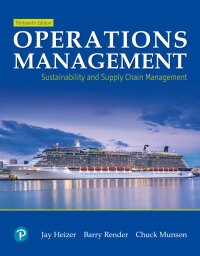1. What is your analysis of the bag-weight problem? In November 2018, John Wells, a customer service...
Question:
1. What is your analysis of the bag-weight problem?
In November 2018, John Wells, a customer service representative of Bayfield Mud Company, was summoned to the Houston warehouse of Wet-Land Drilling, Inc., to inspect three boxcars of mudtreating agents that Bayfield had shipped to the Houston firm. (Bayfield’s corporate offices and its largest plant are located in Orange, Texas, which is just west of the Louisiana–Texas border.)
Wet-Land had filed a complaint that the 50-pound bags of treating agents just received from Bayfield were short-weight by approximately 5%.
The short-weight bags were initially detected by one of Wet-
Land’s receiving clerks, who noticed that the railroad scale tickets indicated that net weights were significantly less on all three boxcars than those of identical shipments received on October 25, 2018. Bayfield’s traffic department was called to determine if lighter-weight pallets were used on the shipments. (This might explain the lighter net weights.) Bayfield indicated, however, that no changes had been made in loading or palletizing procedures.
Thus, Wet-Land engineers randomly checked 50 bags and discovered that the average net weight was 47.51 pounds. They noted from past shipments that the process yielded bag net weights averaging exactly 50.0 pounds, with an acceptable standard deviation s of 1.2 pounds. Consequently, they concluded that the sample indicated a significant short-weight. (The reader may wish to verify this conclusion.) Bayfield was then contacted, and Wells was sent to investigate the complaint. Upon arrival, Wells verified the complaint and issued a 5% credit to Wet-Land
Step by Step Answer:

Operations Management: Sustainability And Supply Chain Management
ISBN: 9780135225899,9780135202722
13th Edition
Authors: Jay Heizer; Barry Render; Chuck Munson






